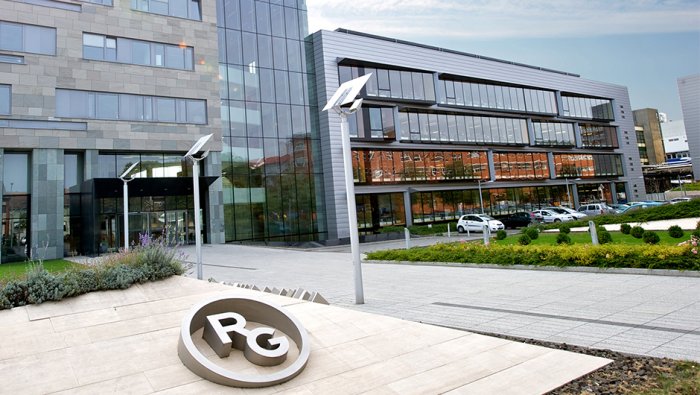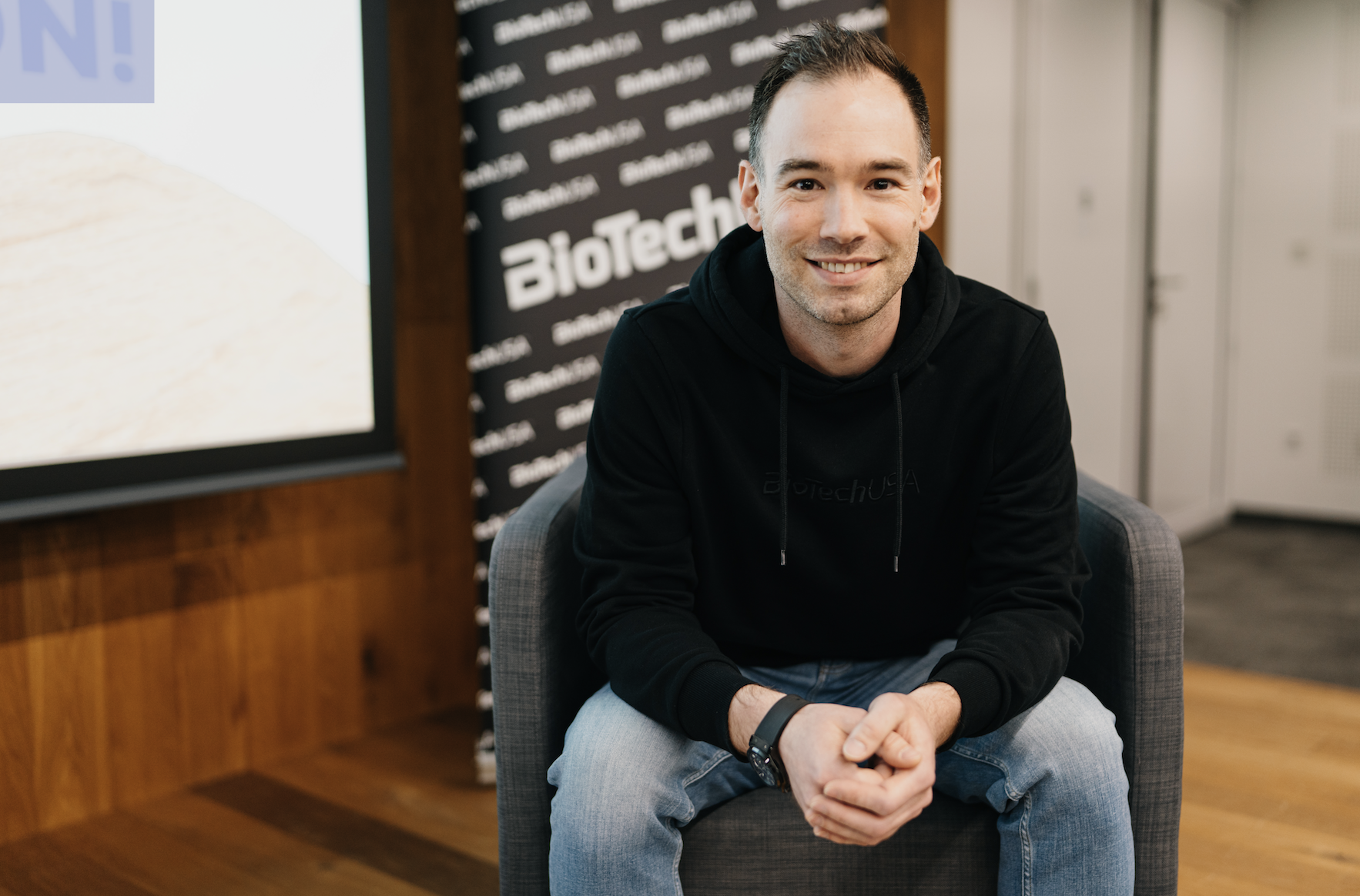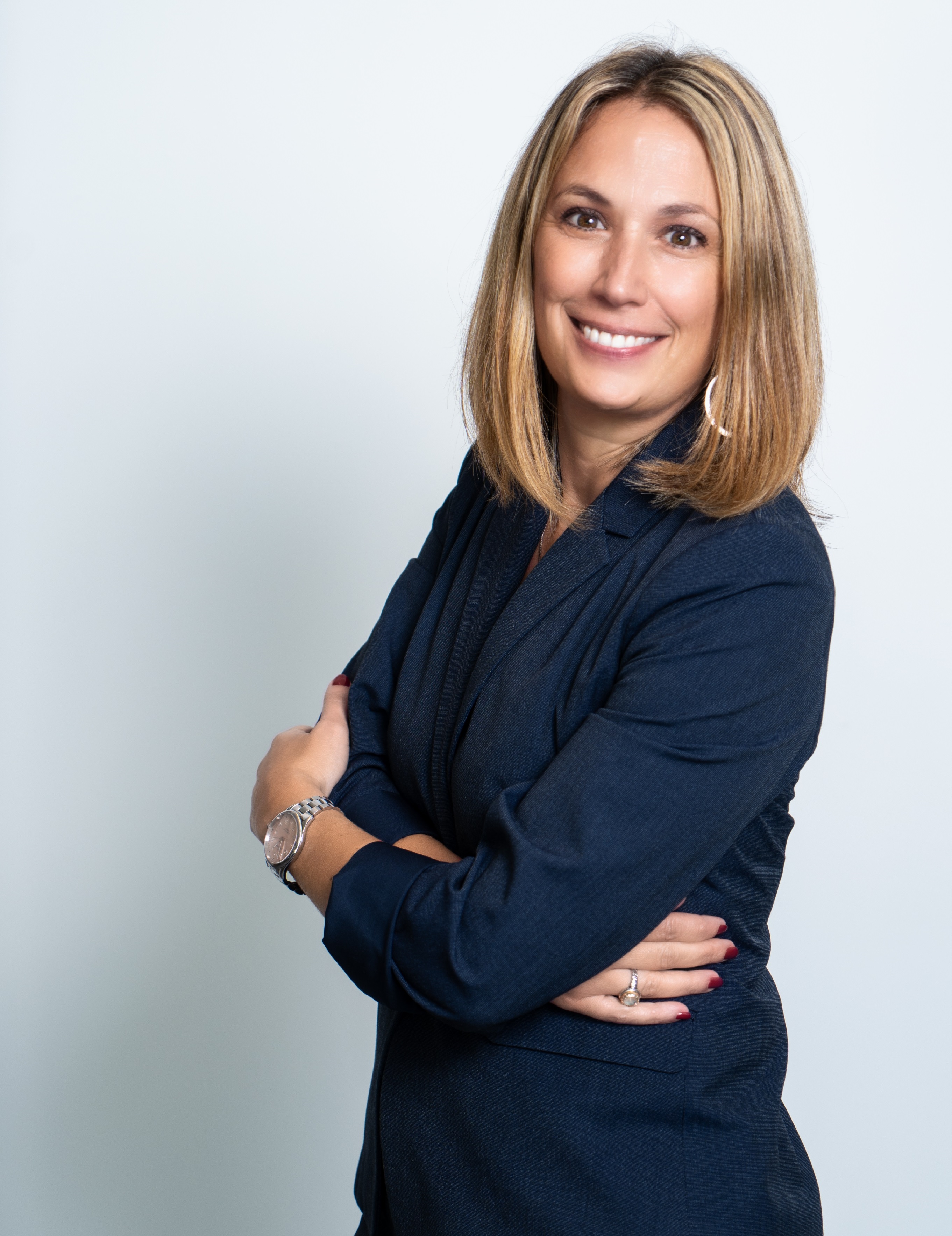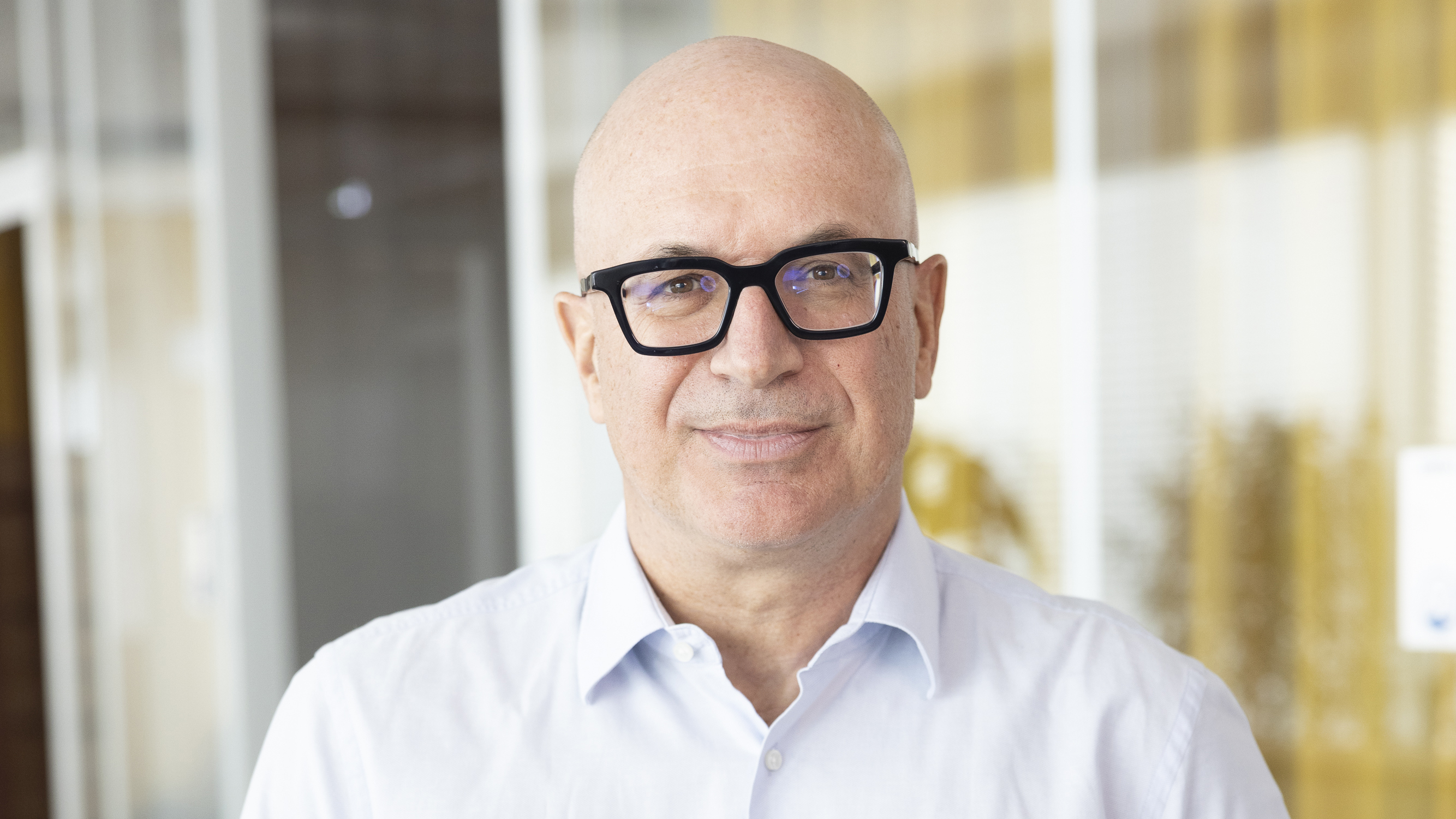From Soviet Tank Base to Lithium-ion Battery Factory

László Ludman
Anyone heading west on Route 1 from the Danube town of Komárom in 1989 would have passed a large Soviet military base, its many tanks largely obscured behind lines of strategically planted trees. Three decades later, the trees remain, but the vista behind them is dominated by a gleaming array of modern manufacturing plants, stretching back 300 meters and over a kilometer in length.
The scene is as symbolic as any of how Hungary has transformed into and beyond the new millennium. It ends with two of the largest units on the site, both owned by the South Korean SK Innovation Group, housing state-of-the-art lines built to produce lithium-ion batteries to power a new generation of electric vehicles.
Work on SK Battery Hungary, SK Innovation’s first production plant in Europe, began in 2018; it started mass production in the first quarter of 2020. Representing an investment of EUR 313 million, it has the capacity to produce 7.5 GWh of cells annually, enough to power 250,000 electric vehicles, according to the company’s website.
The following is an edited interview for the Budapest Business Journal with László Ludman, human resources development and public relations manager with SK Battery Hungary.
BBJ: In your website PR video, you state that Komárom is your first “non-Korean” site. Can you give the three top reasons for choosing Hungary?
László Ludman: The top reasons are the proximity of European car manufacturing sites, the availability of a well-trained workforce, and the support from central and local governments, which included a state subsidy, a cash grant. [Ludman was unable to provide details of the grant, but Hungarian media cited Trade and Foreign Minister Péter Szijjártó as saying Hungary had provided a subsidy of HUF 8.2 billion (EUR 26.3 mln at the time) towards the project at the ground-breaking ceremony in March 2018. This represents 8.4% of the total investment value.]
BBJ: What is the current headcount at your Komárom plant? The Hungarian labor market was already tight when you began your investment, and even after the pandemic, unemployment is low; the government even boasts about this. How difficult has it been for you to find and train the workforce you need?
LL: The current headcount is 1,400. Although initially we expected difficulties due to the Komárom, Tatabánya, and Győr region’s low unemployment rates, thanks to the attractive wages and benefits offered by the company, together with the clean, modern work environment, recruitment has been successful. More than 90% of employees live within 50 kilometers.
BBJ: Komárom is only a bridge length away from Slovakia, across the Danube. How many of your current workforce are Slovak citizens? And your factory is not within walking distance of Komárom. Do you provide transport to help ferry workers to the plant?
LL: Approximately 20% of the workforce are Slovak citizens. We provide a free bus transfer service for employees. There are seven routes for daily office staff and 18 for shift workers.
BBJ: From where do you source the raw materials needed for Lithium-ion batteries? How secure are your supply lines? Are these materials particularly hazardous?
LL: Suppliers are Asian or European companies with secured supply lines. We have the benefits of more and more material suppliers launching operations in Hungary, following those investing in the battery manufacturing business. There are only a few hazardous materials used, and obviously, we follow very strict health and safety regulations.
BBJ: Where do your batteries go after manufacture, and what forms of transport do you use?
LL: Our main clients are the Hyundai Motor Company and Daimler Group. Battery cells are forwarded by road to the OEMs [original equipment manufacturers, the automakers] or sub-contractors where battery cells are put/arranged in battery modules and/or battery packs that are already ready for installation into electric vehicles.
BBJ: I’m sure Korean culture, including work culture, is very different from that in Europe in general and Hungary in particular. “Culture shock” sounds like a hackneyed term, but what have been the most significant culture shocks that you’ve experienced, and how have you reacted to these?
LL: In the work environment, Hungarian and Korean members experience difficulties due to language and cultural differences. But we didn’t have enough [surprising] experiences to call it a ‘culture shock.’
SKBH is committed to narrowing the differences by researching various communication channels. For example, we publish a monthly in-house magazine dealing with know-how and safety rules at the production site. And as part of ‘Open Discussion’ and ‘Mutual Respect,’ part of SK Innovation’s management philosophies, we have held a number of workshops to help people understand each other’s cultures.
In addition, we believe that the reason SKBH has been able to operate its plant stably so far is because each member, regardless of nationality, has been responsible for their duties and has consistently accomplished achievements.
BBJ: Referring back to the first question, have your reasons for choosing Komarom been justified?
LL: Our reasons for choosing Komárom have been absolutely justified. One visible evidence [of that] being the second plant, SK Battery Manufacturing Kft. “next door.” This will have an annual capacity of 10.2 GWh. Construction work has been completed, and test production is currently ongoing, with mass production expected to start in the first quarter of 2022. And at SK Battery Hungary, we reached the 2020 production targets.
BBJ: You had not even got the Komárom plant in full production before you decided to establish an even bigger plant in Iváncsa, 25 miles southwest of Budapest. How is this project progressing?
LL: Currently, we are in the pre-construction preparation phase with piling ongoing. Construction works are scheduled to start soon, very probably this July. The Iváncsa project, valued at HUF 681 billion, that’s EUR 1.8 bln, is the largest ever greenfield investment in Hungary, and SK Innovation’s largest European factory unit, with a production capacity of 30GWh, creating 2,500 new jobs.
According to the company’s strategic plan, it strives to achieve 125 GWh of production capacity by 2025, a significant part of which will be provided by the Hungarian plants. Considering 70 kWh average power output and 400 km effective range per vehicle, the factory at Iváncsa will provide for the production of 430,000 electric cars annually.
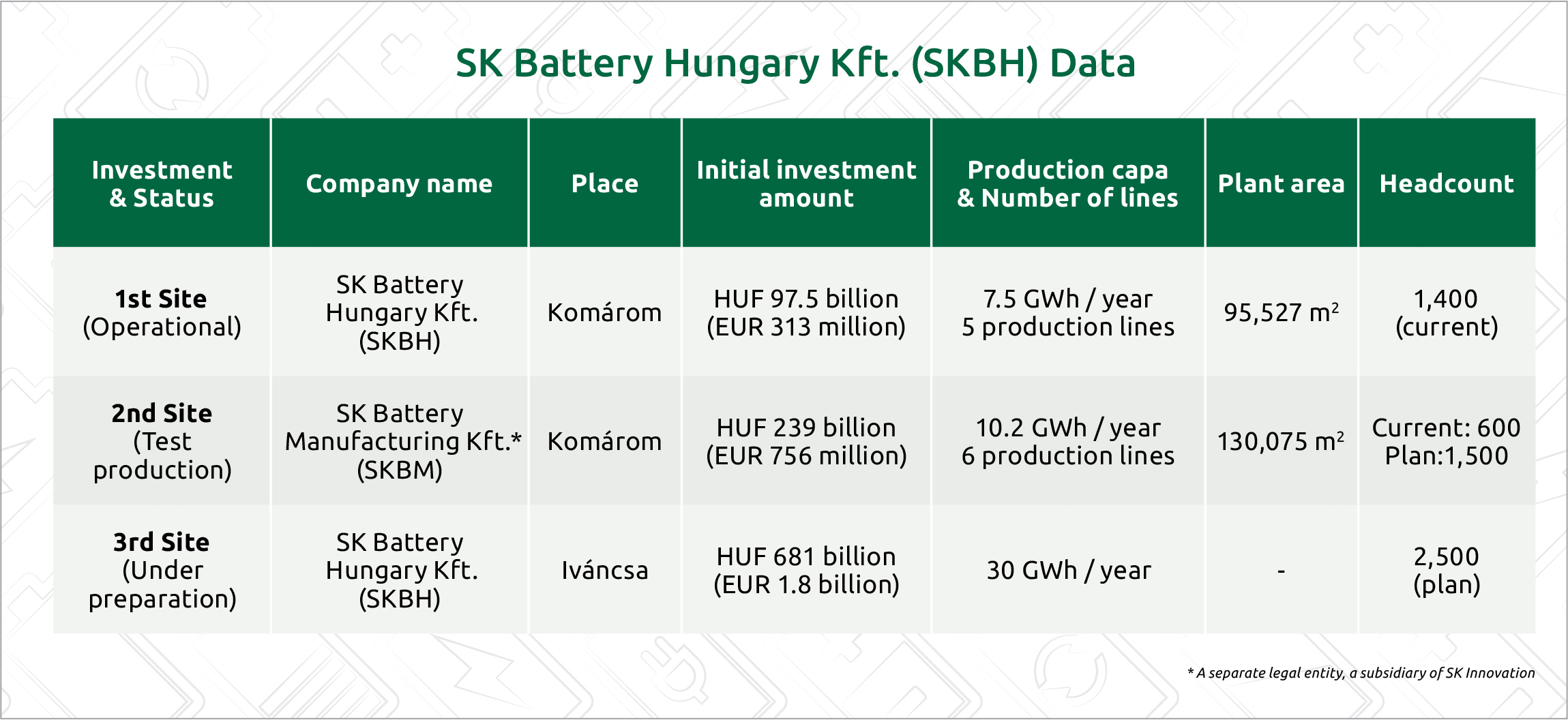
This article was first published in the Budapest Business Journal print issue of July 30, 2021.
SUPPORT THE BUDAPEST BUSINESS JOURNAL
Producing journalism that is worthy of the name is a costly business. For 27 years, the publishers, editors and reporters of the Budapest Business Journal have striven to bring you business news that works, information that you can trust, that is factual, accurate and presented without fear or favor.
Newspaper organizations across the globe have struggled to find a business model that allows them to continue to excel, without compromising their ability to perform. Most recently, some have experimented with the idea of involving their most important stakeholders, their readers.
We would like to offer that same opportunity to our readers. We would like to invite you to help us deliver the quality business journalism you require. Hit our Support the BBJ button and you can choose the how much and how often you send us your contributions.



